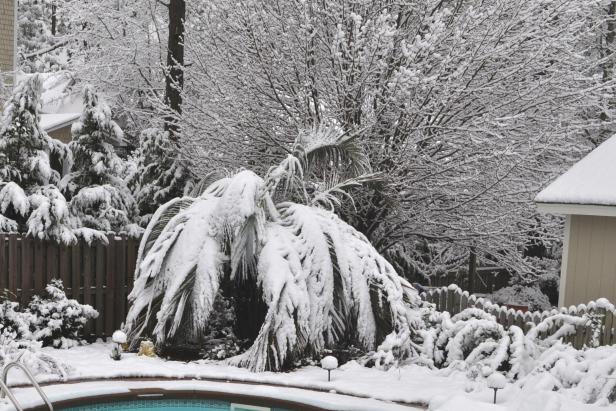Overwintering Palms

Image courtesy of Real Palm Trees
Attribute it to gardeners pushing the envelope or global warming, but palms are popping up in places you wouldn’t expect. Palms are growing in 40 states, thanks to the efforts of enterprising gardeners. Places like New York, Pennsylvania, Ohio and even Michigan are hosting a touch of the tropics as gardeners test their green thumbs with winter hardy palms. If you’re ready to tend your own homegrown paradise, consider adding a winter hardy palm to your gardening repertoire.
The trick to growing palms in areas where they’re not a typical landscape plant hinges on several things. First, make sure you select a palm that’s rated hardy for your growing zone. There are palms that naturally grow in cold environments—like mountain regions of Afghanistan or even Bulgaria. It’s also important to know the lowest temperatures your area usually experiences in an average winter.
To hedge your bets with winter hardy palms, start with the largest plant you can afford and easily cover. A larger palm has likely already experienced some cold weather and developed some degree of cold tolerance. It also has more food reserves to help it overwinter successfully—and bounce back if cold weather kills existing fronds. Plant in spring, so the palm has a growing season to establish. Use a quality palm fertilizer to strengthen your plant so it can stand up to cold weather.
Many hardy palm growers suggest keeping palms in a pot the first winter, acclimating them to cold temperatures by placing them in an attached garage. Choose a planting spot that’s protected from winds (especially frigid north and west winds) and preferably with a southern exposure.
Keep an eye on weather forecasts through winter. If temperatures are predicted to tumble, plan to take action to protect your palm. Which protection method you use depends on how large your palm is. Here are steps you can take to protect your palm:
Spray the leaves with an antidesiccant like Wilt-Pruf, which helps reduce moisture loss through leaves.
- Protect the trunk. The trunk conducts water to leaves, so it’s important to protect it. Wrap the trunk with burlap or a blanket, topped with a layer of Christmas-type lights—the kind that generate heat (not LEDs). C9 lights usually produce the most heat, but read the package to be sure. Some gardeners wrap trunks with a layer of fiberglass-type insulation followed by bubble wrap.
- Cover small trunk-less palms with a frost blanket and possibly add warmth-generating lights.
- Mulch small palms with a layer of chopped leaves. Cover the base and crown, but don’t smother the plant completely. During a cold snap, protect the entire plant by adding a box or blanket over the leaf mulch.
- Do not cover a palm completely (excluding sunlight) for more than 3 days.
- Protect the bud, the growing tip of the palm, at all costs. If it dies, your palm will likely die. This tip is highly susceptible to diseases that develop when wet conditions linger. Many gardeners spray leaves with a copper fungicide a few days before a cold snap to kill disease organisms that might be present.
It’s worth the effort to research winter hardy palm networks online to learn about palm growers in your region and glean specific advice for your locale.














































